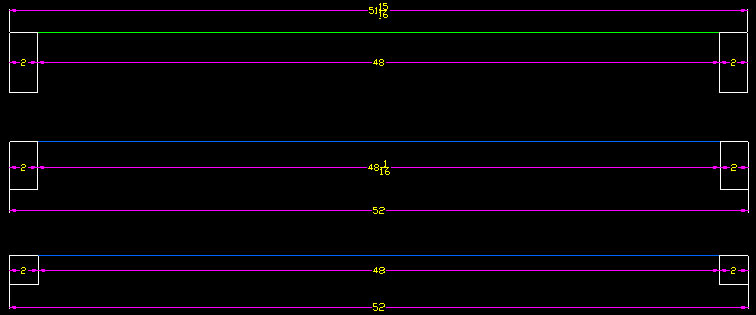Question
While I am not immediately looking at NBM, I am considering upgrading my machining centre to a flat bed machine and wondering if you need 5' capacity to make the nesting work efficiently. I use my CNC too much currently to consider dedicating more time to panel processing, but I hate to cut off any potential for future NBM. How long does it take to router out the average kitchen using NBM?
Forum Responses
We were using the cab to CAM link from Alphacam linked to Cabinetvision. The result was machining a 30 cab kitchen in about 8 hours. This seems like a long time, but remember all the holes are in the sides when it is finished and the panels are cut to size.
Check to see if ALL your tooling will reach full travel on the X and Y axes--this is important.
Contributor M, how is the nesting going, feed speeds, tool life, software? We have pushed our 1/2 melamine to 2000 inches/min. and the 5/8" and 3/4" to 1600 inches/min. Average bit life is 150-200 sheets.
After I figured out this limitation I did some tests to see what all the "bigger is better" was about when it came to routers and nesting. I took an average pattern of cabinet parts. It was a 5 x 8 of 3\4” melamine. The yield was around 87 percent. The pattern was made up of a good mix of drilling, grooving and cutting. It really was just a good average panel. I posted and cut it at what I found was the top speed I could run my 3\8” 2 flute Vortex bits. This speed is 925 inches per minute and I will cut 60 sheets between bit changes. The time to cut this pattern at 925 IPM was 6 minutes and 48 seconds.
I then re-posted this pattern at 1625 IPM. This time the pattern ran in 6 minutes and 36 seconds. This over 50 percent increase in feed speed achieved a whopping 12 seconds or 3 percent reduction in cycle time. If you get a chance run your router through the same test and see what your results are.
To the original questioner: In the nested machining process, I pre-drill several 1.5 mm pilot holes on all cabinet side panels for screws. We staple and screw our boxes together. No horizontal hole drilling is happening on my router.
As to contributor M's experiment with feed rates, this is absolutely the truth. In nested, the idea that faster feedrates rule is simply ignorant. An average machine needs approximately 12" to ramp up to full feed speed and then obviously 12" to ramp back down in order to take the corner effectively. If one analyzes the average lineal inches in the cabinet parts they run, they find that their machine will only be at full speed less than 10% of the cutting cycle. This is evidenced by contributor M's results.
Also, when going faster than contributor M's results, you begin to lose the other major benefit of NBM and that is the "free labor" that you get with a longer internal cycle time (10-15 minutes). Much faster than 6 minutes and the operator will be too busy to edgeband, drill, sand or assemble.
Contributor M, I ran those tests you suggested. My test feedrates were 975 IPM and 1950 IPM. We ran a complete job, which consisted of 3 different sizes of material, 18 sheets in all. The higher feed rate yielded a 15% decrease in time, or dropped the overall 69 min. in cycle time down to 59 min. At first glance, this does not seem significant, however, in an 8 hour shift, saving 10 min/hour adds up. We have also found, (after first sharpening) that the 2000 IPM feedrate has significantly extended tool life.
